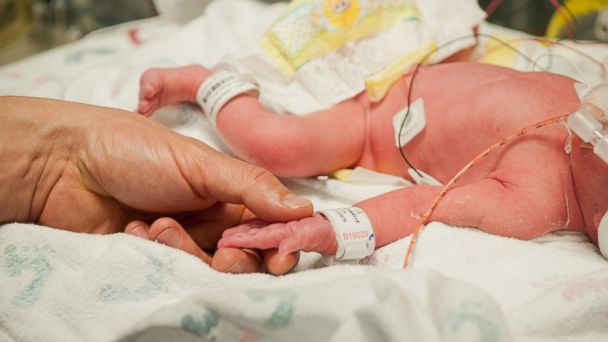Breast-feeding isn’t only good for the developing infant: It helps mom out too.
A study published in Obstetrics & Gynecology on June 5 revealed that if people stuck with the recommended length of breast-feeding their newborn for at least one year, there would be 5,000 fewer cases of breast cancer, 54,000 fewer cases of hypertension and almost 14,000 less heart attacks in women each year. The researchers say low breast-feeding rates are racking up billions of dollars in health care costs each year.
“We know that 60 percent of women don’t even meet their personal breast-feeding goals, whether it’s three or four or six months,” author Dr. Melissa Bartick, assistant professor of medicine, said to TIME. “We need to do more to support women so they can breast-feed longer. There are thousands of needless cases of disease and death that could be prevented.”
The American Academy of Pediatrics recommends that babies are breast-fed exclusively for the first six months of life, and then have breast-milk supplementally given to them until they at least a year. Breast-feeding can continue as long as the mother, baby and physician feel it is appropriate. Solid food should only be introduced starting at six months of age, but the Centers for Disease Control and Prevention recently discovered that 40 percent of parents are giving their children solid food by the time they reach 4 months.
The World Health Organization recommends even longer breast-feeding, with complementary foods through a child is 2-years-old and beyond.
Though rates have increased in the U.S., only 45 percent of mothers are still breast-feeding at some level by six months, and only 23 percent continue on for one year.
It is recommended that women breast-feed because it provides protection for the babies, from the early “liquid gold” colostrums full of nutrients and antibodies produced at the end of pregnancy to the mature milk that has the right amount of fat, sugar, water and protein to nourish a healthy child. Breast milk is easier to digest, and the hormones and antibodies inside may help ward off diseases for the child.
Children who are breast-fed have lower rates of necrotizing enterocolitis, a gastrointestinal tract disease, respiratory infections, asthma, type 2 diabetes, and obesity, although the last factor was debated in a March 2013 study in JAMA. Some other studies have shown that breast-feeding can lower rates of type 1 diabetes and sudden infant death syndrome (SIDS) as well.
Mothers can also benefit from breast-feeding. In addition to helping mothers bond with their children and helping them save time from boiling milk, breast-feeding saves money. Formula and supplies cost about $1,500 a year, and breast-fed children get sick less often — which means less sick days for the parents.
In addition, breast-feeding has shown to lower rates of type 2 diabetes, breast cancer, ovarian cancer and postpartum depression in women.
The new study is a response to a 2010 study in Pediatrics, which Bartick was a lead author on, that looked at how low breast-feeding rates impacted children and subsequent costs to society. It revealed that about 900 babies would be saved if 90 percent of mothers breast-fed their children exclusively for the first six months of their lives. In addition, low breast-feeding rates leading to infant deaths leads to a societal cost of $13 billion, that study found. The figure was calculated from many factors including the potential wages lost by the children who did not grow up to be adults.
“We got a million inquiries saying, ‘That doesn’t include the women!’ We wanted a complete picture,” Bartick remarked.
Researchers from Harvard University used a model to simulate the lives of about 2 million U.S. women from the age of 15 to 70. They looked at outcomes for five diseases that are linked to lower rates if a mom breast-feeds: Breast cancer, premenopausal ovarian cancer, hypertension, heart attack and type 2 diabetes. They also looked at health care costs over their theoretical lifestimes.
The researchers factored in the current breast-feeding rate — about 25 percent of moms breast feed the entire recommended 12 months — and the ideal breast-feeding rate, which would be about 90 percent of mothers.
In addition to the lower adverse health events, they found out that if 90 percent of mothers breast-fed for a year it would cost $860 million less in health care fees. The study showed that the low rates of breast-feeding cost society $17.4 billion from maternal deaths before 70.
Experts are trying various methods to boost breast-feeding rates. A May 2013 study in Pediatrics showed that giving babies that lost a lot of weight minimal amounts of formula actually increased long-term breast-feeding rates. Ninety-five percent of mothers whose infants were given early limited formula (ELF) were still breast-feeding at three months at some level, compared to 68 percent of mothers who did not receive ELF.
– CBS News By MICHELLE CASTILLO

